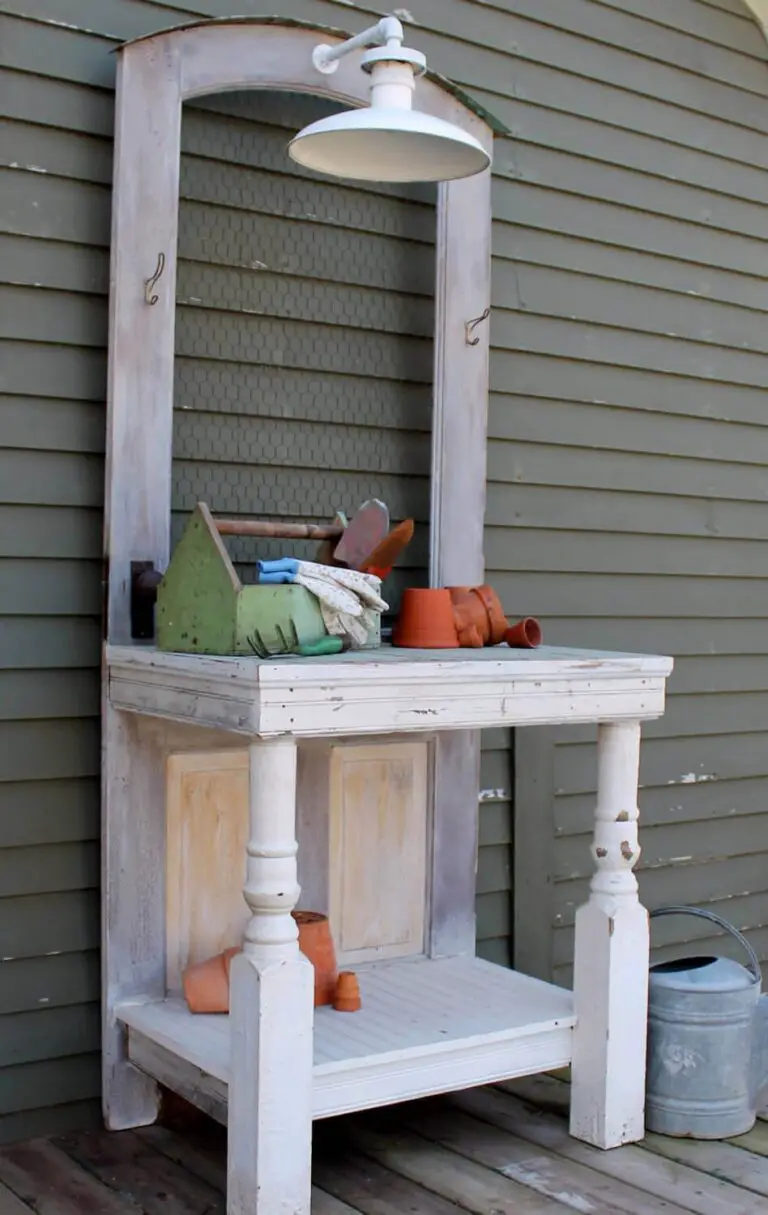Marigold Flowers: How To Plant, Grow, And Care For Marigolds
While Mexican marigolds (Tagetes spp.) may have originated in Mexico, their popularity has spread globally due to their vibrant colors, ease of care, and numerous benefits. From ornamental to medicinal purposes, these annuals have earned a special place in many gardens. This article will delve into the fascinating world of marigold flowers, exploring their symbolism, types, and cultivation tips.
Marigolds facts
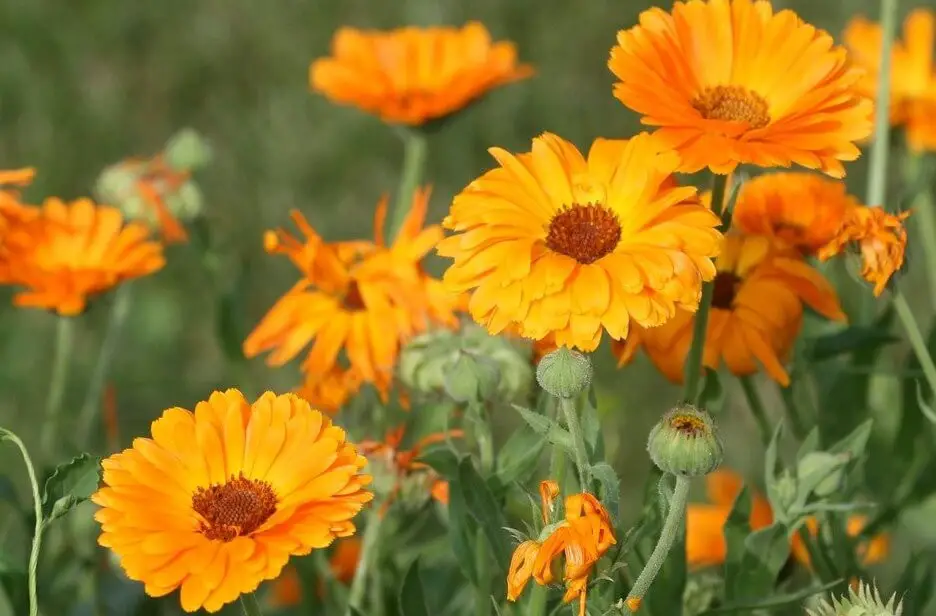
Marigolds are an intriguing flower that still holds many secrets waiting to be uncovered. Here’s what makes them truly unique: they’re part of the Asteraceae family, which means they’re related to sunflowers, daisies, and asters. What’s more impressive is their natural resistance to a variety of unwanted garden critters, including insects, mosquitoes, deer, rabbits, and others.
In Aztec culture, marigolds were known as the ‘flower of the rain,’ with the peculiar ability to predict afternoon rainfall if they bloom during the day. From an health perspective, marigolds are also remarkable for containing lutein, a substance beneficial for eye health and offering anti-aging properties. Furthermore, they possess a range of anti-inflammatory, anti-fungal, anti-viral, and antibacterial qualities.
Marigold flower meaning & symbolism
Marigolds are often associated with bright colors like orange and yellow, conveying emotions such as enthusiasm, encouragement, energy, joy, and happiness. However, this vibrant flower also holds its own unique symbolism and meanings. In Mexican culture, marigolds are an integral part of the traditional Dia Los Muertos celebrations, where they’re used to create wreaths and bouquets that symbolize grief and mourning.
Beyond their cultural significance, marigolds have been valued for their medicinal properties and ritualistic importance in various traditions, including Aztec, Buddhist, and Christian practices. Today, this flower is often seen as a symbol of optimism and the will to succeed.
Types of Marigolds
Mexican marigold (Tagetes erecta)
In terms of physical characteristics, African marigolds – also known as Tagetes erecta – stand out for their remarkable height, reaching up to 4 feet tall. Native to Mexico and Central America, these flowers are characterized by large, showy double-flowers that bloom in abundance. Interestingly, they are remarkably resilient in dry conditions, making them an attractive option for gardeners looking to thrive in drought-prone areas.
Signet marigold (Tagetes tenuifolia)
The American saffron, also known as the Lemon Gem, boasts a unique appearance. As an annual bush that thrives from mid-summer through early winter, it produces individual, solitary blooms on each stem amidst its striking lacy leaves. The plant’s foliage is undeniably eye-catching, making it a pleasure to behold.
French marigold (Tagetes patula)

The American Marigold variety stands out for its compact, bushy growth pattern, which is distinct from the more sprawling African Marigolds. Notably, these flowers are quite large, measuring around 6 inches in diameter, making them a striking addition to any garden or arrangement. What’s more, this type of marigold excels in environments with higher moisture levels, where its roots can absorb the necessary nutrients and water to thrive.
Southern Cone Marigold (Tagetes minuta)

In the Andean regions of South America, particularly in Peru and Ecuador, a unique herb known as stinking roger or black mint thrives. Characterized by its tall stature and bright yellow blooms, this variety of marigold is well-suited to full-sun conditions and boasts an extended growing period and blooming season.
American marigolds
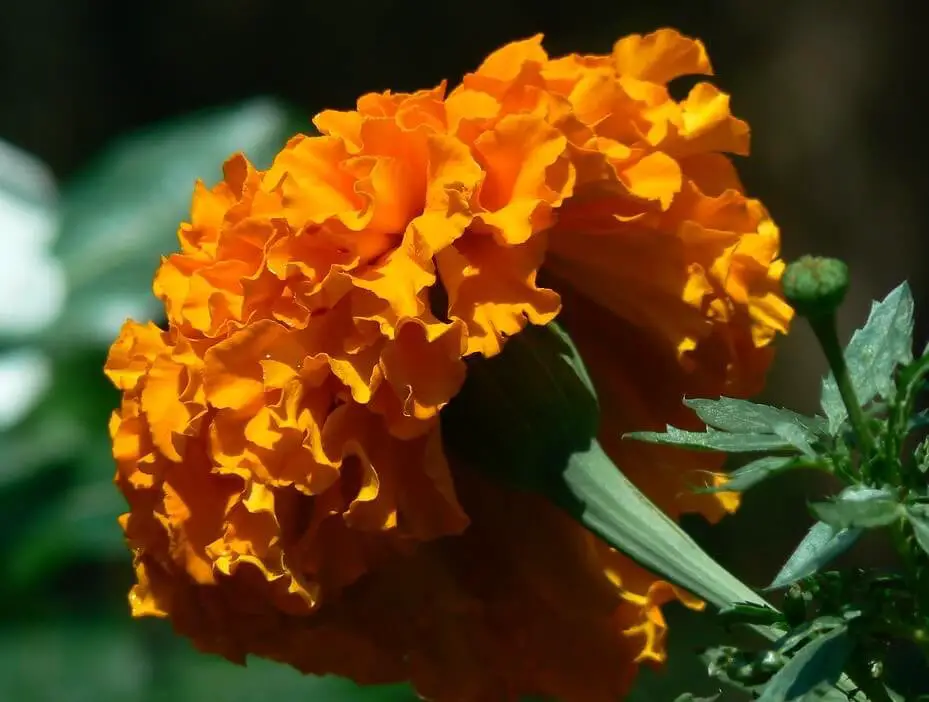
Mexican tarragon, also known as sweet-scented marigolds, boasts a compact, bushy appearance with a woody stem base. This herbaceous plant produces small, bright yellow flowers that are highly valued for their medicinal properties, particularly in treating stomach upset. Furthermore, its essential oil is extracted and utilized for various purposes.
Is marigold annual or perennial?
Marigolds are a low-maintenance delight, boasting simple planting processes and minimal care requirements. But what sets them apart is their impressive array of advantages – not just in the garden, but also in medicine. As an annual plant, marigolds thrive from spring to summer, flaunting vibrant blooms that bring joy to any outdoor space.
Marigold colors
The vibrant orange and brassy hues of marigolds bring a celebratory feel to any garden setting, with subtle nuances of yellow and softer orange adding depth to their festive colors. While the classic combination remains popular, marigolds also come in a range of alternative shades including sunny yellow, bold red, and warm pastel orange.
Starting a Great Garden on a Budget

When it comes to gardening on a budget, Marigolds are an excellent choice. By purchasing them from a local nursery, you’ll have the flexibility to select the vibrant colors that best complement your outdoor space. What’s more, you’ll be getting actual plants that are often already in bloom, making for a stunning visual impact. To ensure their success, simply loosen the soil around the roots and plant the entire root ball in the ground.
With proper care, these hardy flowers will thrive, filling out and blooming beautifully throughout the summer months.
Planting marigold

When to plant
While marigolds can be planted at any point between early spring and late summer, certain taller varieties are best suited for the early spring season. This is because they are unable to thrive in extreme climate conditions. The temperate weather of spring provides ideal conditions for these taller marigold varieties to establish a strong root system, grow rapidly, and eventually mature.
The gentle warmth and consistent moisture of this time of year allow them to flourish, making it the perfect time to plant them.
Where to plant
Marigolds thrive in conditions that provide a balance between sunlight and shade. While they do require at least 6 hours of direct sunlight per day, they can also adapt to partial shade. An ideal location for these flowers is a spot that receives full sun during the morning and afternoon, but has sufficient shade during the peak sun hours. Additionally, taller varieties benefit from being planted in a sheltered area that protects them from strong winds and heavy rainfall.
For optimal growth, consider providing stakes around taller plants to prevent damage from gusty weather.
How to plant from seeds
Marigolds are renowned for their rapid germination rate, typically producing sprouts within days of planting from seed. After eight weeks, you can expect them to bloom. When sowing seeds, wait until the climate becomes temperate and the soil has warmed up slightly. Space seeds an inch apart and ensure consistent watering after planting. Once sprouts emerge, transfer seedlings to a new spacing, with smaller varieties requiring 8-10 inches and taller varieties 10-12 inches.
Replanting necessitates loosening the soil to at least 6 inches deep. When creating the planting hole, it should be slightly larger than the plant’s root ball. After filling the hole with soil, apply a 2-layer mulch to prevent insects, weeds, and retain moisture in the soil. Water thoroughly for a week to ensure optimal conditions.
How to Keep Marigolds Blooming All Summer Long
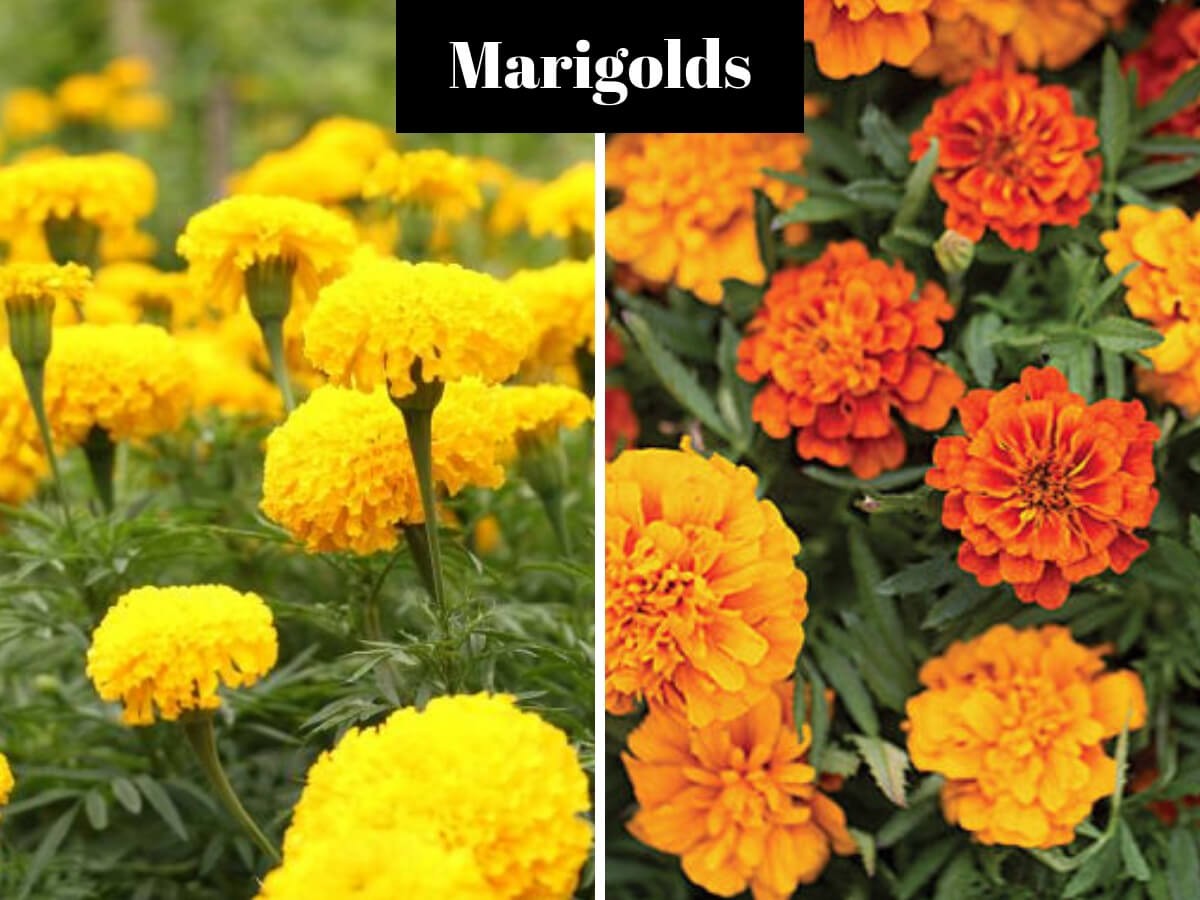
Throughout the warmer months, marigolds will continue to flourish, with no signs of slowing down even as summer transitions into fall. To encourage these vibrant blooms to maintain their beauty all season long, a simple yet crucial practice comes into play: deadheading. This involves consistently removing spent flowers from the plants, allowing them to redirect their energy towards producing new buds and nurturing healthy growth.
How to Make Marigolds Last Year after Year

To keep your Marigold flower garden thriving without breaking the bank, it’s easier than you think to propagate them for future seasons. One key step is to collect and store the seeds from your current crop of Marigolds during the summer months. Simply place dead flowers in a watertight container as you go through the process of deadheading them. This allows you to save those precious seeds, which will be essential for planting next year’s garden.
Once the growing season has come to a close, store your collected seeds in a watertight container until spring rolls around again. As the threat of frost passes, it’s time to start anew with your Marigold flower garden. Begin by planting those saved seeds about an inch or so deep into the soil, and keep the ground consistently moist. Before long, you’ll be rewarded with sprouting seedlings and the promise of another colorful bloom-filled year.
While a small initial investment is required to get started, the effort and cost will be well worth it in the long run. With a little creativity and some basic maintenance, you can enjoy a perpetual Marigold flower garden without dipping into your wallet.
Growing marigold indoor tips
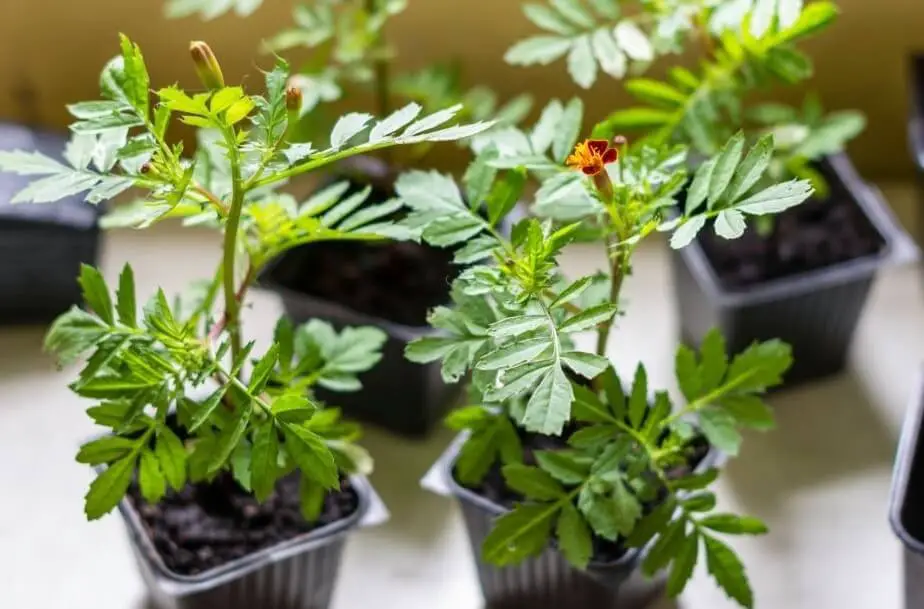
While it’s true that indoor or potted marigolds typically have a relatively short lifespan of less than a year, there are some simple tips to help extend their indoor longevity. To start, marigold seeds should be planted 4-6 weeks before the onset of late winter in warm trays, allowing them to thrive and grow prior to the growing season. In terms of placement, potted marigolds require an indoor location that receives between 6-10 hours of light per day.
When it comes to soil, use a light mix and allow it to dry out slightly before watering. Daily watering by the base is recommended to maintain proper moisture levels. To ensure the health and well-being of your marigolds, avoid overcrowding in pots and provide good air circulation indoors. A general rule of thumb is that one marigold plant can comfortably be housed in a 6-inch pot.
Marigold care
Soil
Marigolds are known for their adaptability to various soil types, but they thrive best in slightly fertile and well-draining conditions. If you’re planning to plant them in clay-based soils, ensure that it’s well-ventilated to prevent waterlogging. This hardy flower can tolerate a wide range of soil pH levels, from slightly acidic to neutral and alkaline, making it an excellent choice for gardeners with varying soil conditions.
Fertilizer
While amendments or fertilizer can be added during transplanting to support growth, it’s not strictly necessary. A balanced 5-10-5 formula can be used at this stage if desired. When it comes to in-ground planted marigolds, fertilizers are not always required. In fact, applying fertilizer during the growth phase can lead to bushy foliage, but may compromise the overall flower production.
Potted marigolds, on the other hand, may benefit from water-diluted fertilizers, although these should be used sparingly and only as needed.
Water requirements
When it comes to tending to your marigolds, one crucial aspect is avoiding excess moisture that can lead to root rot. To achieve this, focus on watering from the base of the plant, rather than overhead. This approach helps prevent waterlogged soil that can be detrimental to the flowers’ health. In general, water your marigolds only when the top inch or so of soil feels dry to the touch.
During periods of intense heat, you may need to increase the frequency of watering to ensure the plants continue to thrive. If you’re growing potted marigolds, it’s essential to be mindful of their unique moisture needs. Since the potting mix can dry out quickly, daily watering is often necessary to keep the soil consistently moist.
Sun & Lighting
Marigolds are typically sun-loving plants. When cultivated outdoors, they require at least six to eight hours of uninterrupted, direct sunlight exposure daily. This is crucial for their optimal growth and development.
When grown indoors or under artificial lighting conditions, marigolds still need a significant amount of light. They thrive in environments that provide 8-10 hours of direct artificial illumination per day or where they can receive natural sunlight.
Temperature
As marigold seeds begin to germinate, they flourish in a temperature range of 10-15°C. In contrast, when these flowers reach maturity and start blooming, it’s crucial to provide an environment where the nighttime temperatures remain above 15°C.
Repotting
During the repotting season, which typically falls during spring when the soil is warm and moist, it’s essential to provide young marigolds with suitable growing conditions. As previously mentioned, this requires a depth of at least 6ft for the soil, as well as adequate spacing between plants. For smaller varieties, planting distances of around 8-10 inches should suffice, while taller varieties will require slightly more room, approximately 10-12 inches apart.
Pruning
To boost the beauty and longevity of your marigolds, consider deadheading them before spring arrives. This simple task not only enhances their appearance but also stimulates a prolonged blooming period that can extend into early summer. Furthermore, regular deadheading prior to the bloom season can help encourage bushier flowers when they do start to bloom, resulting in a more vibrant display.
Propagation
As the seed-grown plant matures, its reproduction method mirrors its origins – through seed propagation. When the flowers wilt, resist the urge to intervene for a short time to allow the seeds within the flowerhead to ripen properly. Once the blooms have fully desiccated, carefully remove the petals and gently shake the plant to dislodge the seeds. This process can be repeated: sow the seeds, await the sprouts’ emergence, and then replant to continue the cycle.
In the winter

When maintaining overwintered marigolds, it’s essential to provide them with direct bright light and a temperature range of 10-15 degrees Celsius. This allows the plants to remain healthy during the dormant period. Avoid watering until the soil has had a chance to dry out, as this helps prevent root rot. While marigolds may appear to be dormant, they still require some natural sunlight to thrive.
When spring arrives, consider transferring your overwintered marigolds outdoors to reap the benefits of direct sun.
How long do marigold seeds last
While marigold seeds can technically last for up to three years when properly harvested and stored, their potency is significantly diminished after just one year. In fact, if you store them beyond this timeframe, the likelihood of successful germination drops dramatically. By the end of the second year, the chances of a seed germinating are already relatively low, at around 40%.
By the third year, that number plummets to just 20%, making it essential to use or replant your marigold seeds within a year of harvesting for optimal results.
Marigold diseases and problems
Marigolds’ susceptibility to diseases stems from excessive moisture, making them vulnerable to powdery mildew and fungal spores. Leaf burns and leaf spots can also occur if the plants are not receiving ideal soil conditions. It’s possible that the issue arises from a lack or excess of essential nutrients in the soil. While marigolds may be more prone to certain afflictions, they generally possess a high level of disease resistance.
How to harvest marigold flowers

Harvesting marigold flowers requires a gentle approach to ensure a bountiful bloom cycle. Begin by carefully snipping the stems just above the soil line when the first blooms start to appear. Be mindful of which stems you choose to harvest, as over-pruning can negatively impact the number of flowers produced in subsequent seasons.
Once harvested, place the marigolds in vases and change the water daily to keep them fresh.
For those who enjoy using marigolds for culinary purposes, such as brewing tea or creating potpourri, a hanging method is often employed after harvesting. This allows you to preserve the delicate petals while still showcasing their vibrant colors.
How to store marigold seeds
When you’re not ready to plant marigold seeds immediately, you can preserve them for up to a year. To do so, simply store the seeds in an envelope and place it within an airtight bag. It’s essential to maintain a consistent temperature between 30-50°F (15-26°C) and keep the container away from direct sunlight. This storage method allows marigold seeds to remain viable for extended periods of time, ensuring you can plant them when you’re ready.
Uses of marigold

Marigolds are a versatile and beneficial addition to any garden. As a natural pollinator, these flowers attract bees, butterflies, and ladybugs, making them a valuable asset for promoting biodiversity. Additionally, their strong scent is repellent to unwanted insects like hornworms and whiteflies, helping to keep your garden pest-free. They also deter rabbits and deer, providing an extra layer of protection for your plants. Beyond their role in the garden, marigolds have several practical uses.
When processed into essential oils and ointments, they exhibit restorative properties that can treat lesions and varicose veins. The flowers themselves are edible and can be used as a flavorful addition to salads, with gem marigolds, French marigolds, and Mexican mint marigolds being particularly prized for their culinary use. Marigolds have also been traditionally used as a substitute for saffron, earning them the nickname ‘poor man’s saffron.
‘ Their flowers can be dried to make tea, which is used as a home remedy for sore throats, muscle cramps, and fever. Interestingly, marigold flowers are also used as chicken feed, enhancing the yellow color of traditional feeds and providing a nutritious boost to your flock.
Conclusion
Despite their understated appearance, marigolds are a stunning addition to any garden or arrangement. As we’ve explored the world of flowers, it’s clear that these humble blooms possess a unique charm that belies their modest profile.
Related Posts
When it comes to flower delivery, there’s an age-old question: do you tip your florist or floral courier? Understanding gratuities can be crucial in showing appreciation for the services provided. As we explore this topic, we’ll also touch on some other fascinating topics like 29 weeds with yellow flowers that are perfect for identification and removal, as well as colorful perennials ideal for partial shade gardens or containers.
In addition to these interesting tidbits, we’ll delve into a comprehensive guide on how to grow and care for the beautiful African Violet plant. For those looking to brighten up shady garden corners, we’ll also provide a detailed profile and tips on growing Astilbe, a stunning flowering perennial. Finally, if you’re looking to create a lush shade garden in a cold climate, our top ten list of shade perennials is sure to inspire.





